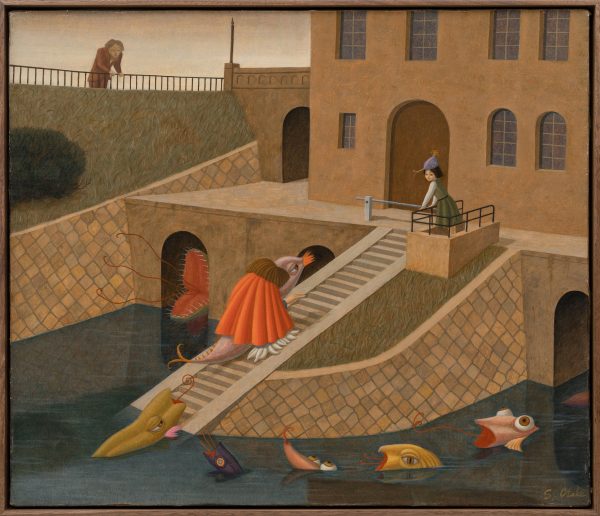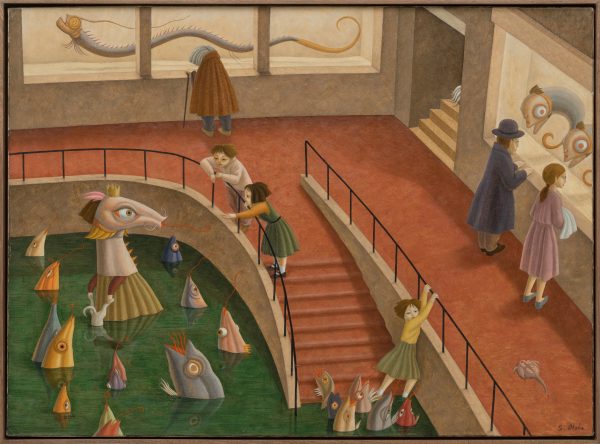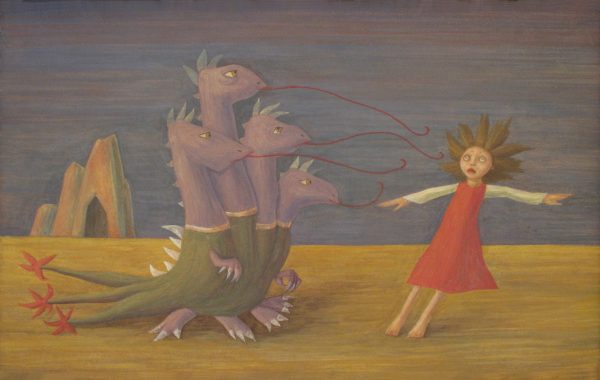Hive Center for Contemporary Art is honored to present Japanese artist Shigeo Otake’s latest solo exhibition Shedding, opening on April 26, 2025, at Hive | Shanghai. Following Fungitopia (2023) and Undefined Spectacle (2023), this marks the artist’s third solo show with Hive. The exhibition spans nearly half a century of Otake’s painting practice, focusing on his travel experiences and sustained exploration of insects, marine life, and fungi. Through the intersections of nature, culture, and history, Otake weaves spiritual narratives and spatial imagery. Curated by Zhao Xiaodan, the exhibition will run until June 3, 2025.
“Shedding” refers both to a biological process of transformation and to the artist’s creative gesture of gradually peeling away old structures to generate new forms in the intersection between ruins and memory. Otake’s early fascination with insects, his immersion in spiritual Christian experiences, and a sense of uncanny from Shōwa-era Japanese culture intertwine to form the ecological structure of his painterly language. From the 1970s to 1980s, his travels and studies of human civilizations across Europe, North Africa, the Middle East, and East Asia directly shaped the multilayered spatio-temporal logic and symbolic system in his paintings.
The 1995 Great Hanshin Earthquake not only destroyed the landscapes of Otake’s childhood but also disrupted the visual order and ideals once infused into his work. In an instant, his homeland became rubble. The earthquake’s overwhelming force—what Timothy Morton terms a “hyperobject”—infiltrated the artist’s body, emotions, and imagination, lingered ghost-like across space, language, and human gestures. It was in the aftermath of this disaster that Otake’s optimistic depictions of city-states and fortresses, once aligned with Japan’s bubble economy, collapsed into landscapes of ruins and relics of human civilization.
Within these fractured terrains, time becomes disordered and meaning unravels. Fissures act as vessels for coexisting with history—silent yet full of tension. With meticulous brushwork and mimetic structures, Otake entwines microscopic life, historical remains, urban ruins, and theological symbols, rendering ruins as sites where life can be renegotiated. For the artist, ruins are never ornamental nods to the past or romantic reveries; rather, they mark the arrival of a new sacredness. This divinity from “below” subtly hints at the light of Messianic grace.
Wandering through the spatial web Otake constructs, viewers encounter a labyrinth of spirit, interwoven with multiple layers of imagery. After the outbreak of the COVID-19 pandemic in 2019, Otake completed his over four decades of life and work in Kyoto and returned to his hometown of Kobe. To him, Kobe is more than a real-world city; in its post-quake rupture and rebirth, it has become a heterotopic constellation of spaces—gathered fragments of history, emotional undercurrents, and echoes of personal memory. In his recent Kobe-related works, Otake not only reveals the heterogeneity of space but also imbues them with profound meditations on ultimate concerns.
Coexisting with all that remains unspoken, the artist investigates, from the depths of time and space, the entanglements of history and civilization, species and ecology, theology and reason. Like an ascetic, Otake penetrates the surface of things through delicate strokes and symbolic structures, touching the essence and foundations of existence. He weaves perceptual diagrams that nest within one another, mirroring each other. Shedding responds to how we dwell in an alienated world, and how we seek spiritual redemption amid rupture and disorder. In this inward and expansive space, Otake continues to construct strange coordinates—reflecting his profound gaze into the realm of suffering and his persistent questioning of how we might dwell within it.
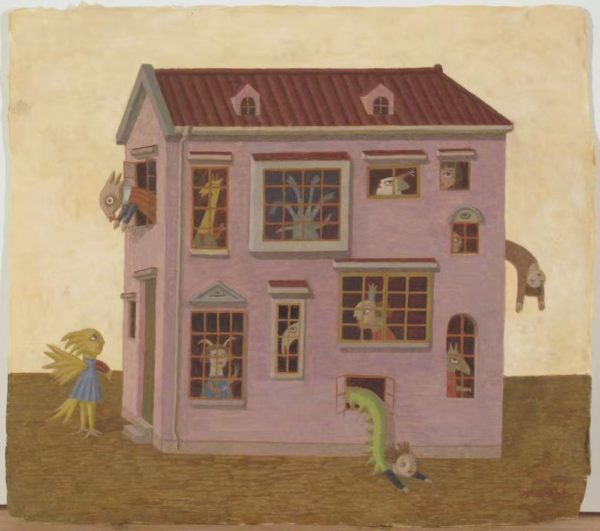


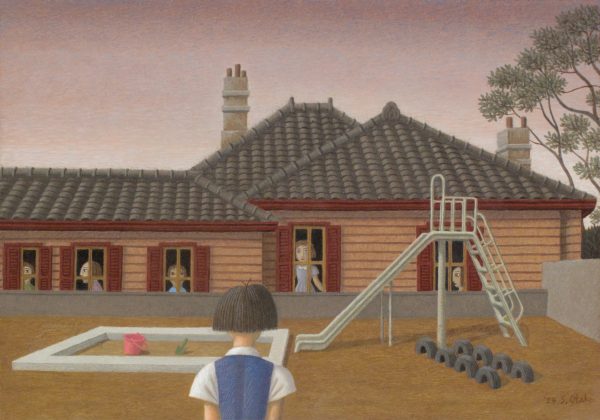
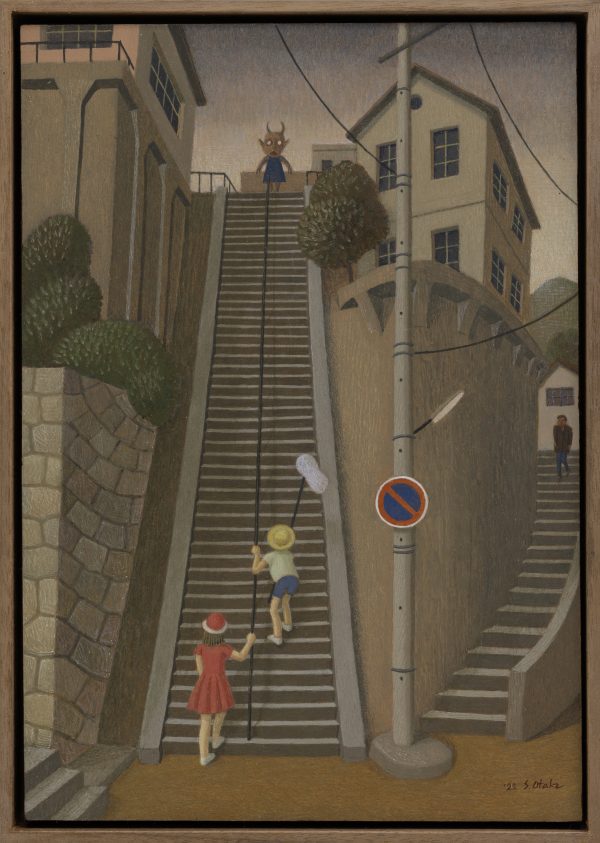
大竹茂夫-Shigeo-Otake-不要在我梦中胡闹-Dont-Make-a-Fuss-in-My-Dream.-2022-布面坦培拉油彩-80.3×116.7-cm-600x418.jpg)

大竹茂夫-Shigeo-Otake-禁区-Restricted-Area-2013-木板坦培拉油彩-40.9×53cm-600x472.jpg)
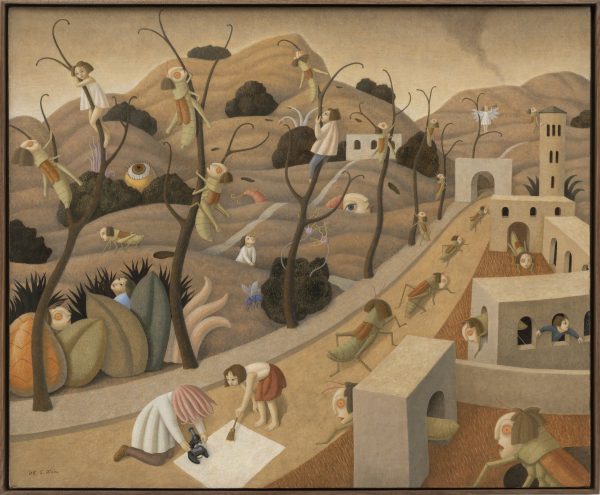



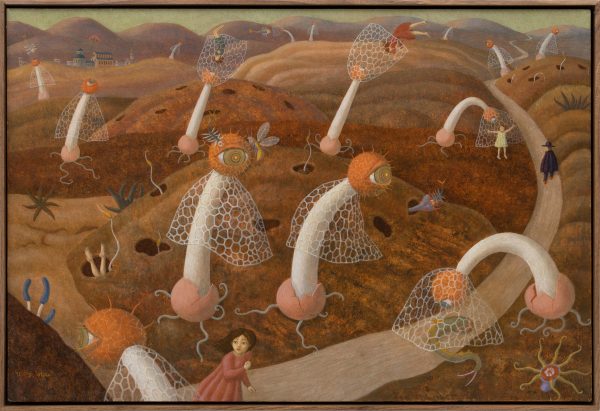
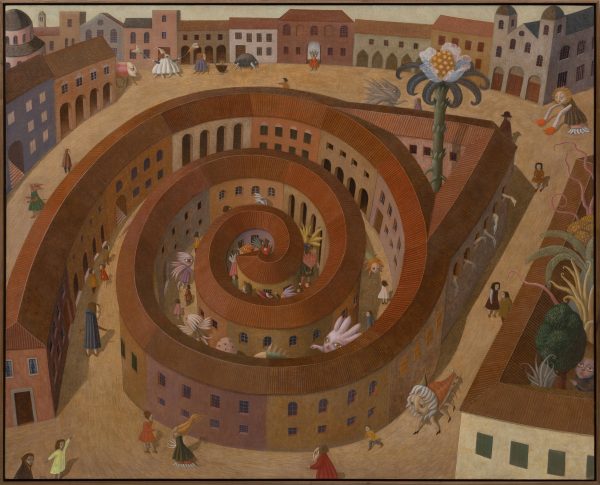
大竹茂夫-Shigeo-Otake-废墟中的肺鱼-Lungfish-in-Ruins-1995-布面坦培拉油彩-90.9×116.7cm-600x472.jpg)
大竹茂夫-Shigeo-Otake-安居之所-Contented-Place-1991-布面坦培拉油彩-91×116.7cm-600x473.jpg)
大竹茂夫-Shigeo-Otake-猎魔人-The-Witcher-1991-布面坦培拉油彩-65.2×91cm-600x434.jpg)
